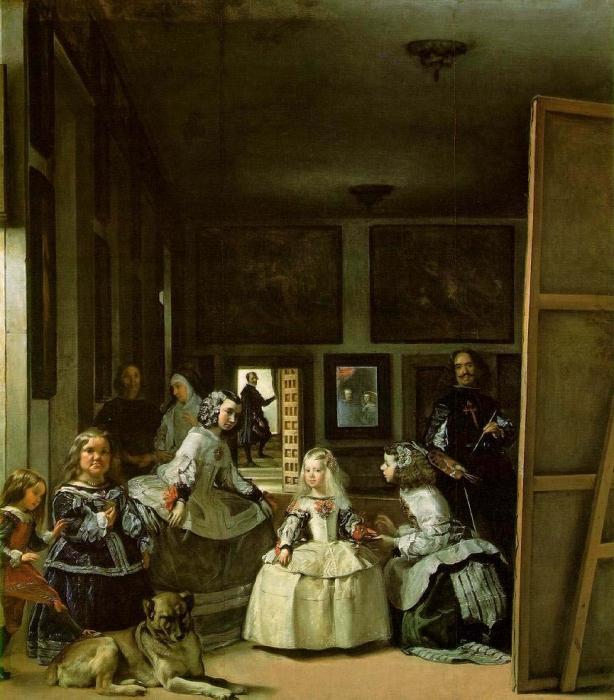There are paintings in the history of painting, the riddles of whichfor centuries trying to comprehend descendants, and which in many ways remain incomprehensible. One of these works is the picture of Velazquez "Meninas". The main mystery of this large canvas, which is the pride of the collection of paintings of the Prado Museum in Madrid, consists in compositional construction. What do we see looking at the picture?

In the central part of it there is a five-year-old daughterthe Spanish royal couple - Infanta Margarita. The bright, fragile figure of a little girl is surrounded by a respectful retinue - the ladies-meninas, who served as the name of the painting, the court dwarf and the jester, a large dormant, very indifferent dog. All these are important and necessary persons of the suite of the Spanish royal court, which Velazquez very truthfully portrayed. "Meninas" is a historical picture, even the names of all those depicted on it are known. But this is not the main thing in the canvas. The puzzle lies in another. Let's pay attention to the image of the artist on the left side, which faces a large easel with brushes and a palette. He is busy with work - he writes a portrait of the royal couple, the image of which can be seen if you look closely and look into the mirror hanging over the head of the infant. Thus, it turns out that the royal couple is directly in front of the picture - where the courtiers and Velasquez himself are looking. "Meninas" is a canvas, where the pictorial plan is closely intertwined with the real one. Indeed, viewers looking at the picture, become its immediate participants, because they are located next to or behind the royal couple. A similar illusion is also achieved by certain artistic techniques that Velazquez uses. "Meninas" are written very accurately and realistically, the play of light and shadow creates volume and depth.

So, the unusual and mysterious compositionis that the artist does not stand before the canvas that he creates. He is part of the picture and draws the one who stands before him. In turn, the one he draws is reflected in the mirror hanging on the opposite wall, and appears as if outside the art world, outside the canvas. The viewers viewing the picture are in reality, but they are also part of the artistic plan, illusory being present at what is happening.
Such a multifaceted composition "picture in the picture" was often used by Velazquez. "Meninas" is a vivid example of that. What did the artist want to convey to the audience? There is still no exact explanation for this.

Mirror image introduced compositionally intopainting, is a technique that was highly valued in Renaissance painting. Such an accurate, realistic depiction of the picture of a flip-flop emphasized the skill of the artist.
Perhaps, having included himself in the framework of the canvas, the artist wanted to show his dependence, stiffness, lack of freedom. He as a court painter could only create in the gloomy walls of the royal castle.
Что же хотел сказать Диего Веласкес?"Meninas" is an artistic creation, which has not yet been solved. Its secret meaning is the source for many different assumptions and research not only by artists, art historians, but also by historians.






























